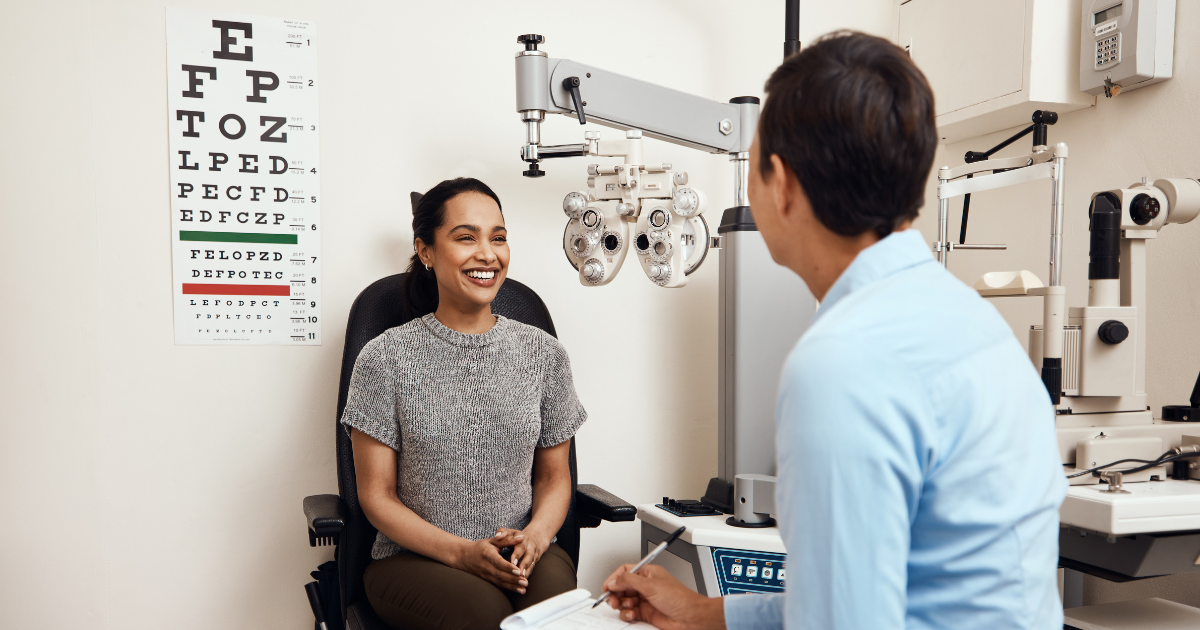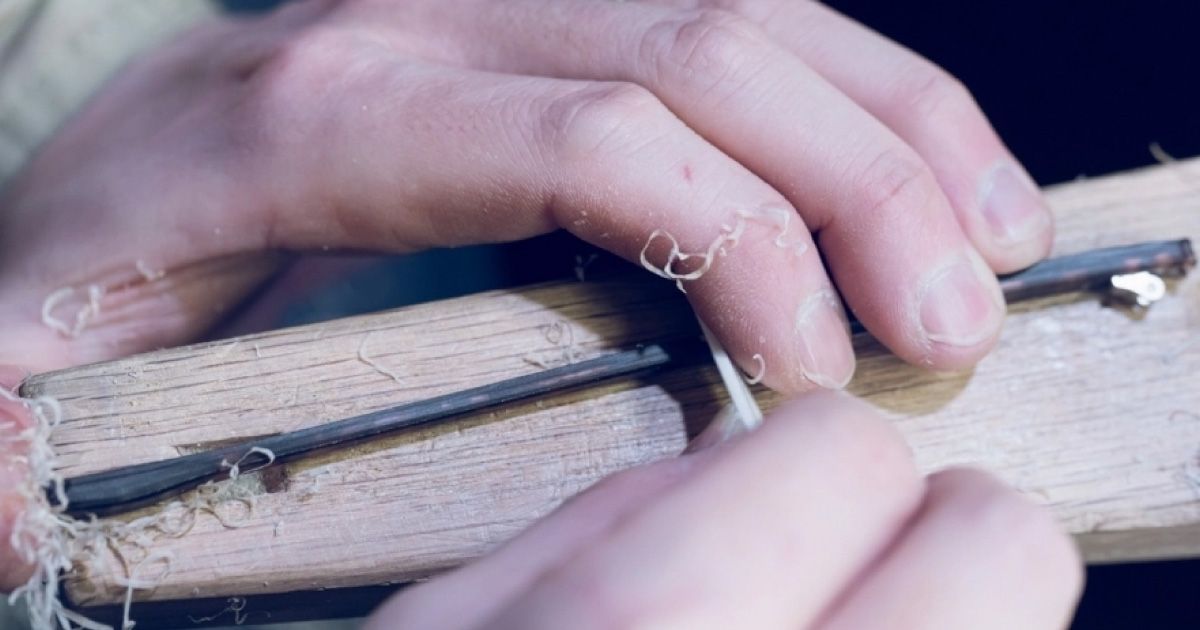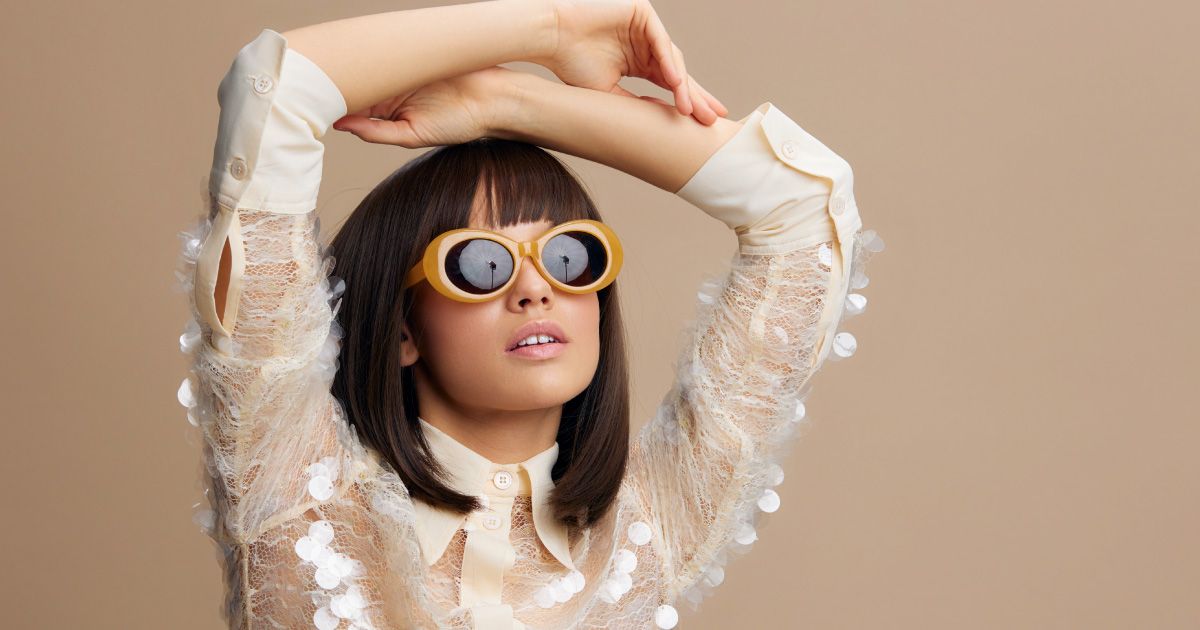Look Sharp: Visual Acuity Testing

Read time: 4 minutes
What is Visual Acuity?
We often hear about 20/20 vision, a measure of visual acuity or sharpness. It's a standard used in the United States and many countries, indicating that you can see at 20 feet what should be seen at that distance. However, it doesn't signify perfect vision, just average or normal.
It's crucial to note that 20/20 vision applies only to distance vision, not near vision. Many with 20/20 distance vision still need glasses for reading. Moreover, 20/20 vision doesn't consider vision quality; clear distance vision doesn't guarantee perfect vision.
Various factors impact vision quality, including eye health, contrast sensitivity, color vision, and depth perception. Surprisingly, having 20/20 vision doesn't ensure you'll never need glasses or contacts. As you age, your eyesight will change, possibly requiring corrective lenses eventually.
How is Visual Acuity Assessed?
Visual acuity is commonly assessed using a Snellen chart, which consists of letters or symbols of varying sizes. The results are expressed as a fraction, with the numerator representing the testing distance (usually 20 feet in the United States) and the denominator indicating the distance at which a person with normal vision can read the same line on the chart.
A person with 20/20 vision can see at 20 feet what a person with normal vision should see at that distance. If someone has 20/40 vision, it means they can see at 20 feet what a person with normal vision can see at 40 feet. Visual acuity is an essential measure in eye examinations and is often used to prescribe corrective lenses such as glasses or contact lenses.
The Evolution of Visual Acuity Testing
Visual acuity tests, fundamental in assessing our ability to see details, have a rich history intertwined with scientific advancements and a profound impact on eye care. Let's look into the historical and contemporary evolution of visual acuity testing, and the significance of these tests in maintaining optimal eye health.
The Genesis of Visual Acuity Assessment
The origins of visual acuity testing can be traced back to ancient times, where rudimentary methods were employed to evaluate vision. Early civilizations, including the Egyptians and Greeks, recognized the importance of clear vision. However, formalized testing didn't emerge until more recent centuries.
Snellen Chart: A Milestone in Visual Acuity Measurement
In the mid-19th century, Dutch ophthalmologist Herman Snellen introduced a groundbreaking method—the Snellen chart. This standardized chart featured rows of letters, each decreasing in size, and became a universal tool for measuring visual acuity. Patients were asked to read the smallest line they could discern accurately, establishing a benchmark for clarity of vision.
Snellen's chart was a pivotal advancement, providing a standardized and quantitative measure of visual acuity. However, it was not without limitations, particularly in assessing certain aspects of visual function, such as contrast sensitivity and reading ability.
Beyond Snellen's Legacy
While the Snellen chart remains a cornerstone in eye care, contemporary visual acuity testing has evolved with technological advancements. New methodologies incorporate sophisticated tools to offer a more nuanced understanding of visual capabilities.
- Computerized Visual Acuity Tests: E-Chart Systems: Electronic versions of Snellen charts displayed on computer screens allow for controlled adjustments in lighting conditions and letter size.
- Interactive Displays: Some tests utilize interactive displays where patients respond to stimuli using touch or a remote control, providing a more engaging experience, particularly for children.
- LogMAR Charts: Logarithm of the Minimum Angle of Resolution (LogMAR): These charts use a logarithmic scale, offering increased accuracy and eliminating some of the limitations of Snellen charts.
- Contrast Sensitivity Testing: Pelli-Robson Chart: Assessing contrast sensitivity, this chart helps identify subtle changes in vision that may not be apparent with traditional Snellen charts.
- Visual Acuity Software: Specialized software on computers or tablets allows for dynamic testing, adjusting font sizes and contrast levels in real-time.
- Eye Test Apps: With the widespread use of smartphones, various applications offer basic visual acuity tests, providing a convenient screening tool.
The Significance of Visual Acuity Testing: Beyond 20/20 Vision
Visual acuity tests extend beyond the conventional measure of "20/20 vision." They play a pivotal role in:
- Early Detection of Eye Conditions: Identifying refractive errors (nearsightedness, farsightedness, astigmatism) early allows for timely corrective measures.
- Monitoring Eye Health: Visual acuity tests are integral in monitoring conditions like macular degeneration, glaucoma, and diabetic retinopathy.
- Prescription Updates: Regular visual acuity assessments guide optometrists in adjusting prescriptions to optimize visual clarity.
- Driving and Occupational Requirements: Many professions and activities require a specific level of visual acuity to ensure safety and efficiency.
The Future of Visual Acuity Testing: Integrating Technology
Advancements in technology continue to shape the landscape of visual acuity testing. Virtual reality (VR) and augmented reality (AR) applications are being explored to create more immersive and accurate assessments. These innovations hold promise for enhanced diagnostics and a more personalized approach to eye care.
The Takeaway
Visual acuity tests, starting with Snellen's chart and evolving with modern technology, continue to be crucial in eye care. Exploring the history and current advancements, it's clear that clear vision isn't just a number but a key to experiencing the world accurately. The development of visual acuity testing shows a dedication to maintaining the precious gift of sight.
Share this blog post on social or with a friend:
The information provided in this article is intended for general knowledge and educational purposes only and should not be construed as medical advice. It is strongly recommended to consult with an eye care professional for personalized recommendations and guidance regarding your individual needs and eye health concerns.
All of Urban Optiks Optometry's blog posts and articles contain information carefully curated from openly sourced materials available in the public domain. We strive to ensure the accuracy and relevance of the information provided. For a comprehensive understanding of our practices and to read our full disclosure statement, please click here.


















